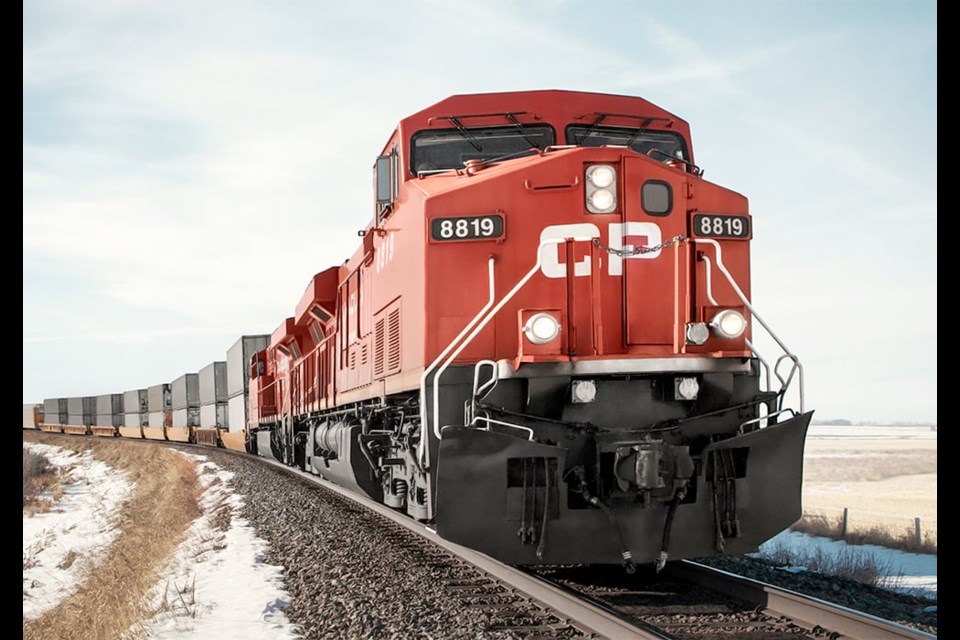WESTERN PRODUCER — Biodiesel and renewable diesel will play a big role in meeting Canadian Pacific Railway’s emissions reductions targets.
Locomotives account for 95 percent of CP’s Scope 1 and Scope 2 emissions, those directly under the company’s control. The railway has a target of reducing locomotive greenhouse gas emissions by 38.3 percent over 2019 levels by 2030.
Scope 1 are direct emissions from equipment, such as train engines, while Scope 2 are those acquired from third parties, such as electricity from a grid.
“For every ton of business we move a mile, we want to reduce the emissions for that by 38 percent,” said Glen Wilson, managing director of environmental risk with the railway.
A lot of those tons are grain. It is CP’s single biggest line of business, accounting for 24 percent of the company’s total freight revenue in 2020.
Wilson said it is important not to put a cap on CP’s total emissions because trains are 3.5 to four times more efficient than trucks, so shifting business to rail is good for the environment. One intermodal train carries the same volume of goods as 400 trucks.
Up to half of the targeted locomotive GHG emissions reduction is expected to come from using fuel blends that contain biodiesel, renewable diesel or other products in the biofuel family, Wilson said.
Several trials are underway, but selecting a blend is a complicated process involving input from locomotive manufacturers and fuel suppliers.
The biggest game changer could be CP’s Hydrogen Locomotive Program, but the company is not relying on that initiative to meet its 2030 target.
It represents the biggest potential transition in how locomotives are powered since switching from steam to diesel.
CP is making “great strides” on the project, which could eventually result in a zero emissions locomotive fleet, but it is a complex technological change.
“It takes time. We don’t want to count on that,” said Wilson.
Much of the other half of CP’s GHG emissions reduction for locomotives is expected to come from technological advances in the locomotives themselves.
One example is a fuel trip optimizer, which is essentially cruise control for trains. It is a more fuel-efficient way for trains to travel versus a hand on the throttle.
The final component in the locomotive strategy is operational efficiencies, such as longer sidings that allow for smoother train operations. Less stopping, starting and speed reductions result in improved fuel use.
CP said it has already seen a 40 percent reduction in GHG emissions since 1990 due to operational efficiencies.
Its second GHG reduction target relates to non-locomotive-related emissions stemming from facilities, vehicles, intermodal yards and other infrastructure. All those assets combined account for 3.4 percent of Scope 1 and Scope 2 emissions.
“Those are some of the biggest, most physical parts of our operation,” said Wilson.
CP has a target of reducing those emissions by 27.7 percent by 2030.
The solar energy farm at company headquarters in Calgary is an example of the types of initiatives that can be used to meet that second target.
GHG emissions savings of the solar project are minimal, but it serves as a visible symbol of the company’s commitment to sustainability.
“Every day that they come to work (employees) are reminded that the lights and their computers go on because of the solar fields outside,” Wilson said.
He noted that CP is in the process of acquiring Kansas City Â鶹´«Ã½AVern and once that deal is complete, it will likely require targets to be reset.
Canadian National Railway did not respond to an interview request to detail its sustainability initiatives.




